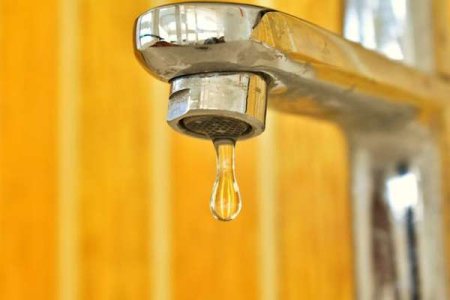Residents sound alarm over rampant thefts in this area. How safe are your supplies during the dry spell?
By
Danielle F.
- Replies 19
In a time when every drop counts, Australians are trying to conserve water, along with other essential commodities.
However, some households have woken up to find their precious rainwater tanks completely drained, leaving them high and dry.
Adelaide Hills has been facing one of its driest periods in recent memory, and a new and unexpected threat has emerged for local residents.
For Kris and Russel, two neighbours living in the area, the ordeal began early Tuesday morning.
‘At 3:15 am, my husband got up to flush the toilet, and there was no water,’ Kris first recounted.
‘I’d been up at 2 am, and there was plenty of water, so sometime between 2:00 am and 3:15 am, a big truck came along and stole 20,000 gallons (about 75,000 litres) of water.’
‘Anybody who wants to get through a padlock can,’ Kris lamented.

The couple, both in their 70s, were left without water—an especially stressful situation as they were hosting guests at the time.
One of their neighbours, Russel, suffered a similar fate.
His tank, which held up to 135,000 litres and was accessible to the Country Fire Service for emergencies, also got emptied.
‘Even if it wasn’t full, it’s still 70,000 or 80,000 litres, and a truckload is only 9,000 litres, so that’s multiple truckloads,’ he explained.
Both residents found truck tracks on their driveways and around their tanks, which confirmed their suspicions.
Kris estimated that her missing water was worth over $2,000.
Meanwhile, Russel’s loss could exceed $4,000 based on current delivery prices.
With water deliveries in high demand and prices soaring due to an ongoing drought, these losses were a major hit to their household budgets.
For many homes in the Adelaide Hills, rainwater tanks are their primary or only source of water.
While Kris and her husband were fortunate enough to have refilled their tank, Russel and many others did not have this option.
According to the Bureau of Meteorology, some areas have gone more than 100 days without significant rainfall.
Reservoirs in the Mount Lofty Ranges are sitting at just 37 per cent capacity, compared to 47 per cent at the same time last year.
On the other hand, the larger Mount Bold Reservoir had only a 29 per cent capacity.
Unfortunately, this scarcity created an opportunity for thieves to profit by stealing water and potentially selling it on the black market.
These criminals use large water trucks capable of carrying thousands of litres at a time.
In rural or semi-rural areas, where tanks are accessible in case of emergencies, residents might not notice anything amiss, especially at night.
Padlocks and other basic security measures may slow thieves down, but as Kris pointed out, determined criminals can bypass them with the right tools.
If you rely on a rainwater tank, especially in a drought-affected area, it’s worth taking a few extra precautions:
In light of the recent thefts, South Australian Police launched an investigation of the phenomena.
With the ongoing dry spell and water shortages, it’s possible that more incidents like this could occur in the coming months.
As water theft continues amid the severe dry spells, Australians may see these kinds of crimes more—not just in the Adelaide Hills but in rural and regional communities across the country.

Have you or someone you know experienced water theft? Are you worried about your own water supply? What steps have you taken to save water during the drought? Share your thoughts and water-saving tips in the comments section below.
However, some households have woken up to find their precious rainwater tanks completely drained, leaving them high and dry.
Adelaide Hills has been facing one of its driest periods in recent memory, and a new and unexpected threat has emerged for local residents.
For Kris and Russel, two neighbours living in the area, the ordeal began early Tuesday morning.
‘At 3:15 am, my husband got up to flush the toilet, and there was no water,’ Kris first recounted.
‘I’d been up at 2 am, and there was plenty of water, so sometime between 2:00 am and 3:15 am, a big truck came along and stole 20,000 gallons (about 75,000 litres) of water.’
‘Anybody who wants to get through a padlock can,’ Kris lamented.

Residents in South Australia have been struggling with their water supply due to lack of rainfall. Image Credit: Pexels/Nithin PA
The couple, both in their 70s, were left without water—an especially stressful situation as they were hosting guests at the time.
One of their neighbours, Russel, suffered a similar fate.
His tank, which held up to 135,000 litres and was accessible to the Country Fire Service for emergencies, also got emptied.
‘Even if it wasn’t full, it’s still 70,000 or 80,000 litres, and a truckload is only 9,000 litres, so that’s multiple truckloads,’ he explained.
Both residents found truck tracks on their driveways and around their tanks, which confirmed their suspicions.
Kris estimated that her missing water was worth over $2,000.
Meanwhile, Russel’s loss could exceed $4,000 based on current delivery prices.
With water deliveries in high demand and prices soaring due to an ongoing drought, these losses were a major hit to their household budgets.
For many homes in the Adelaide Hills, rainwater tanks are their primary or only source of water.
While Kris and her husband were fortunate enough to have refilled their tank, Russel and many others did not have this option.
According to the Bureau of Meteorology, some areas have gone more than 100 days without significant rainfall.
Reservoirs in the Mount Lofty Ranges are sitting at just 37 per cent capacity, compared to 47 per cent at the same time last year.
On the other hand, the larger Mount Bold Reservoir had only a 29 per cent capacity.
Unfortunately, this scarcity created an opportunity for thieves to profit by stealing water and potentially selling it on the black market.
These criminals use large water trucks capable of carrying thousands of litres at a time.
In rural or semi-rural areas, where tanks are accessible in case of emergencies, residents might not notice anything amiss, especially at night.
Padlocks and other basic security measures may slow thieves down, but as Kris pointed out, determined criminals can bypass them with the right tools.
If you rely on a rainwater tank, especially in a drought-affected area, it’s worth taking a few extra precautions:
In light of the recent thefts, South Australian Police launched an investigation of the phenomena.
With the ongoing dry spell and water shortages, it’s possible that more incidents like this could occur in the coming months.
As water theft continues amid the severe dry spells, Australians may see these kinds of crimes more—not just in the Adelaide Hills but in rural and regional communities across the country.
Key Takeaways
- Nearly 200,000 litres of water have been stolen from rainwater tanks in Adelaide Hills, with thieves reportedly using water trucks during the early hours.
- Affected residents discovered their tanks had been drained, with the stolen water valued at more than $6,000 collectively.
- The thefts occurred during an ongoing dry spell in the region, with many rainwater tanks running low due to record-low rainfall and SA Water reservoirs sitting below capacity.
- South Australian police launched an investigation into the incidents, while residents suspect more water thefts could be happening soon.








